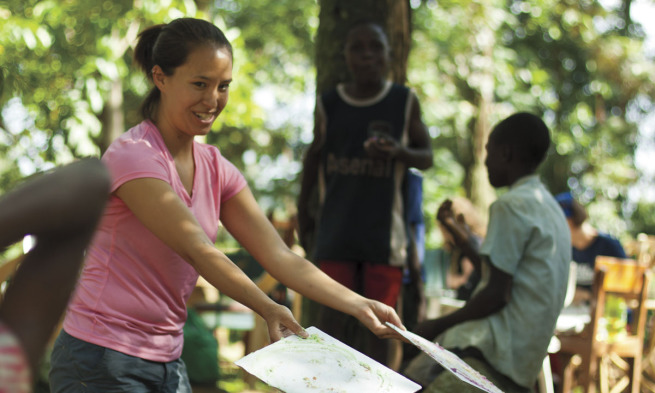Harnessing the Kenyan sun
Being the Change
By Tyler McAvoy (’12)
A nation in east Africa, Kenya is constantly burdened by an ever-increasing demand for electricity. As the population grows and more Kenyans are using computers, cell phones and other electronics, the nation’s electric utilities are strained beyond capacity. The frequent blackouts sometimes last hours.It may be a surprise to many students that there are still places in the world where electricity is a luxury, but in Kenya, this is just the case.
Kenya relies on hydroelectric dams to provide the majority of its power. Yet, when the dry season hits and the rivers run too low to power the dams’ generators, much of Kenya’s most populated areas experience brownouts or electricity rationing. In a place like Nairobi, this can be devastating to a fragile economy. Those who can afford to do so rely on back-up generators, and most of these are powered by polluting diesel fuel. For others, kerosene, charcoal and firewood light the night.
Electricity for the most needy
JMU engineering and math major Leah Haling (’12) says that rural areas are not tied to the electrical grid so brownouts are less of a problem, but there is still a need for electricity. Haling traveled to Kenya this past summer as part of JMU’s Kenya Field School. She joined other students and professors and studied appropriate technology, including energy sources. In an elective course, students also studied the science and applications of solar and other renewable technologies to help bring electricity to the most needy.
Haling says she expected some culture shock but was surprised. ”Kenyans are the nicest people in the world,“ she says.
Many of the places Haling visited didn’t have access to large-scale electrical utilities. Instead, many people wake up with the sunrise and end the day with the sunset. Some use kerosene for lanterns, vehicle batteries for radios and firewood for cooking. The lack of electricity affects all aspects of life. Children read or complete homework by the light of a kerosene lamp. Cooking over an open fire requires time and money for wood. Those who have cell phones have to walk miles to a place to charge them, and then pay to do so.
There are numerous solutions for this problem, but the large-scale answers are incredibly expensive. With 50 percent of the population under the international poverty line, the income isn’t there for the government to electrify all rural areas. Private investors are wary of the unseen costs of building another hydroelectric dam, and stand-alone generators are incredibly expensive.
Solar energy part of the solution
According to Haling, new sustainable energy ideas from within Kenya may provide the answers rural communities need. ”Solar energy is a fantastic thing; all you do is put a solar panel on a house, and it will provide electricity without any change to the house at all,“ she says.
Solar power is the key to getting certain energy needs met, adds Haling, though solar energy doesn’t provide a huge amount of electricity. Haling still believes that little changes are key to getting some forms of energy to everyone who needs it.
One of the projects undertaken during the field school was the introduction of solar lanterns into rural households. These lanterns, which can also be used to charge cell phones, provide bright and consistent lighting, displace the need for costly kerosene, and also eliminate emissions from burning kerosene inside the house — a significant health concern. ”They were just blown away by it and how it could change their lifestyle,“ says Haling.
Engineering students Emilio Jimenez (’13) and Gail Moruza (’13) joined Haling in the 2011 Kenya Field School. Led by integrated science and technology professors Jennifer Coffman and Wayne Teel, and engineering professor Keith Holland, the Study Abroad trip offered 34 students from across the United States the opportunity to work and learn in the ecologically and culturally diverse country of Kenya.
”We did a lot of volunteering and brought books and school supplies,“ says Haling. ”We got to know the families and taught them about the U.S. and our culture.“ The trip also offered Haling a steppingstone to a career. ”After taking this trip I got hooked. I want to go back and help people who don't have as much as others. My main interest is getting energy to people who don't have it.“
